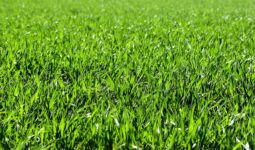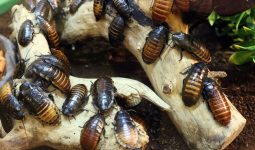Desert shrubs are adapted to hot, dry conditions and need little water.
High temperatures, little rainfall, and sandy or stony soil are the defining features of the types of shrubs in the desert.
Desert-adapted plants either have deep, thick roots or thick, fleshy leaves to retain water.
Although cacti dominate the desert landscape, many other plant species thrive there, including succulents, desert trees, grasses, and several tiny shrubs and flowering bushes.
Below is a list of the types of shrubs in the desert.
1. Aloe Vera
Aloe vera, a rosette-shaped succulent that thrives in dry climates, is a familiar sight in the world’s deserts.
It may be found growing in the soil of deserts in addition to tropical and subtropical climates.
Although there are more than 500 distinct types of shrubs in the desert, aloe vera is one of the most widespread.
Indoors, aloe vera may be grown in containers, and it’s aesthetically pleasing and requires no upkeep whatsoever.
2. Prickly Pear Cactus
Prickly pear cactus is one of the best desert shrubs. With its green, pad-like succulent leaves coated with spines, this shrub is a well-known desert shrub.
These are typical flora of the arid Southwest of the United States.
The shrub’s thick, fleshy leaves can retain significant amounts of water, allowing it to thrive in the arid desert.
When the circumstances are ideal, the prickly pear cactus will bloom in the desert.
The vibrant yellow, purple, and red blooms are welcome in otherwise desolate areas.
These tall desert cacti, which resemble rabbit ears cacti, may reach heights of 16 to 23 feet.
3. The Joshua Tree
Native to the Mojave Desert, the Joshua tree is a species of yucca. This desert tree can withstand drought and goes by many different names.
The tall, sun-loving plant is originally from the Southwestern United States, reaching up to 50 feet in Arizona, Utah, California, and Nevada (15 m). It might be quite some time before the tree grows to that height.
The huge Joshua tree in the desert relies on its extensive root system to get water from the dry soil. Stubby green leaves are spiked and grow on short, stumpy branches.
Leaves develop in clusters at the tips of the Joshua tree’s broad limbs, giving the tree a barren look.
4. Curve Leaf Yucca
Many deserts are habitats for yucca shrubs due to their ability to thrive in extreme temperatures and without water.
This species of yucca is widely cultivated in the southern regions of the United States as an ornamental plant.
The lower leaves of this desert plant curl inward, while the longer, stiffer leaves at the top are tapered to a sharp point.
Like other desert shrubs, this type of yucca prefers sandy soil and coastal dunes.
A thick trunk may reach a height of 1.2–1.5 meters. Massive clusters of fragrant white flowers appear on yucca shrubs in the desert.
5. Jumping Cholla
Trees known as “Jumping Cholla” grow in the Sonoran Desert of Arizona and Southern California.
The main stem of this plant is thick and sturdy, and the branches that sprout from the top are coated with sharp spines, giving the plant a treelike look.
The flowers of the Jumping Cholla may be either white or pink, with lavender patterns.
At approximately 13 feet in height, these plants also reach considerable heights over their lifetimes.
6. Golden Barrel Cactus
The golden barrel cactus is among the desert shrubs easily recognizable by its huge, spiky globe shape.
The shrub develops a crown of tiny yellow flowers on its circular green body, and its spines may be either yellow or white.
These desert shrubs thrive in full sun and hot, dry conditions. They are perfect for rock gardens or desert landscapes.
Slow-growing in its native desert, golden barrel cacti may survive up to 30 years. The potential height of this round, short-lived plant is 3 feet (or 1 meter).
As their natural habitats have been destroyed, these cacti are increasingly hard to find in the desert, but they make beautiful ornamental plants when grown in gardens. The yard and containers should have sand and proper drainage for these shrubs.
7. Pencil Plant
Modern landscapers often utilize these shrubs because of their attractive appearance and ability to withstand dry conditions.
When the plant is under stress, such as from a lack of water, a drop in temperature, or poor soil conditions, the formerly pencil-like sticks change to a vibrant coral color.
It is common practice for gardeners to deliberately deprive this shrub and several other species of shrubs of nutrients or water to bring out the plants’ vivid and striking colors.
8. Yellow Bells
This blooming desert plant, known as yellow bells, can withstand high temperatures and extended periods of dryness.
As its common name implies, the yellow bell plant has vividly colored golden-yellow, nearly funnel-shaped flowers.
The once-green leaves have turned a vibrant golden color. If you need a blooming shrub for your desert garden, this is one of the best types of shrubs.
9. Saguaro Cactus
This desert shrub has a scientific name that indicates it is a cactus, although it is much larger.
This huge cactus, accentuated by wide, curved branches, is a common visual element in depictions of desert landscapes.
The plant’s broad columnar stem can retain water, allowing it to thrive even in arid conditions.
Typical desert habitats for these types of shrubs include the arid regions of the United States Southwest and northern Mexico.
Regarding cacti, the saguaro cactus stands tall above the others. In the desert, these flowers also appear between April and June.
Pollinators like honeybees and hummingbirds are drawn to the large white trumpet-shaped flowers.
These cacti may reach a height of 52 feet (16 meters), although they develop very slowly. A saguaro cactus, therefore, is a great option if you want to bring the desert to your backyard.
10. Organ Pipe Cactus
The “organ pipe cactus” is named for its long, tubular succulent stems, which resemble pipes.
These common desert plants’ thick ribbed stems may reach heights of 16 feet (5 meters) and are covered with vicious spines.
These plants were highly treasured by those who lived in the desert because of the big, delicious fruits they produced.
The tasty fruits of this plant have been compared to watermelons in terms of flavor.
Gardens with full sun and little shade are ideal for these drought-resistant plants.
Plant them in sandy soil with good drainage, as you would for any succulent or cactus.
The Sonoran Desert in Arizona and Mexico is the natural home of the cactus.
11. Jade Plant
Grown inside, the jade plant (Also known as a money tree) requires little water and thrives in dry, arid climates.
Because of their ability to thrive in dry environments, these plants have a low watering need while kept indoors.
In addition to their shrubby appearance, jade plants may take the form of little trees. These plants are shade tolerant but need full sun for optimal growth.
People cultivate them inside and then position their potted plants in strategically lucky locations, believing that the plants themselves will bring them good fortune.
12. Mojave Aster
The Mojave aster, also known as the Mojave woody aster, is one of the desert’s most beautiful blooming types of shrubs. The plant’s popular name comes from its natural habitat in the Mojave Desert, which produces huge daisy-like flowers.
The flower’s petals appear like lavender and white rays radiating from a central golden sun.
There are additional populations of the beautiful Mojave aster blooms in the Sonoran Desert and the Great Basin Desert.
It frequently accompanies other desert shrubs, including Joshua trees, creosote bushes, and saltbush scrubs.
13. Fox Tail Agave
The hot, dry environment of the southwestern deserts is ideal for the foxtail agave.
Although these massive desert plants seem to belong to the aloe family, they are actually from a whole other genus.
One of the most common types of agave found in desert gardens is the fox tail agave.
The huge plant looks spikey due to the cluster of thick, bluish-green leaves.
The high water content of these succulent leaves allows the plant to thrive in the arid environment of the desert.
In dry and subtropical regions, fox tail agaves are considered decorative garden plants.








